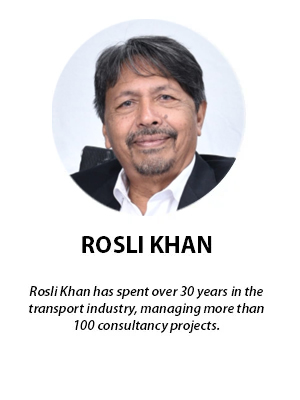
Budget 2024 missed a beat, particularly from the viewpoint of transport.
Funnelling taxpayers’ money to support highway concession firms always sparks vital financial and economic debates.
In Budget 2024, the emphasis was on using funds in the public coffers to help finance an extension to the North-South Highway (PLUS) running from Sedenak to Simpang Renggam.
Budget allocation for private highway
The allocation channels nearly RM1 billion to UEM, a venture between Khazanah and EPF, to finance the construction of just one additional lane along the mentioned stretch.
That raises eyebrows. Why do road users still need to pay toll when public money is used to back a private highway?
- Missed alternatives: Every ringgit backing highway operators is a potential investment missed elsewhere in the area of transport. Perhaps the money could have been put to better use by investing in Keretapi Tanah Melayu Berhad (KTMB) rail systems or other forms of public transit.
- A double whammy for Malaysians: Citizens are essentially paying twice – first in the form of taxes to fund the expansion, and, on top of that, toll fees for use of the highway.
That is unjust, especially because infrastructure enhancements should come from revenue earned by concessionaires. In other words, highway expansions should be financed by toll collection.
An overpriced RM10 billion ticket
A staggering RM10 billion has been earmarked for the Penang LRT in the 2024 budget.
This allocation, when observed critically, seems to be very much on the high side, especially when one considers the alternatives available in transportation technology.
The potential and allure of an LRT system cannot be denied. However, rapid advances in transportation solutions have given rise to efficient, yet more cost-effective alternatives.
For instance:
- Hydrogen-powered road trams: A modern solution, these trams combine the efficiency of traditional tram systems with the environmental benefits of running on hydrogen fuel. They are not only cheaper to implement, but also offer a sustainable approach to urban transportation.
- Autonomous Rapid Transit (ART): A prime example would be the Kuching urban transit system (Kuts). ART is a blend of bus and tram systems, but with a touch of autonomous technology. It offers the flexibility of buses and the capacity of trams, making it an excellent choice for cities looking to balance cost, capacity and innovation.
Broadened investment approach
With a RM10 billion budget, a multi-city approach is entirely conceivable. Instead of investing heavily in a single LRT project for Penang only, these funds could have been spread more broadly.
Imagine initiating ART systems not just in Penang, but also in cities like Johor Bharu, Kota Kinabalu, Ipoh, Miri and Kuantan.
The benefits of such a strategy include:
- Wider coverage: More cities would benefit from updated transit systems, easing transportation woes across a larger demographic.
- Economic boost: Multiple cities receiving funds for transit projects would mean job creation and infrastructure development in several regions, allowing for a more balanced economic growth.
- Immediate relief: Many of these cities are currently facing transit challenges. By allocating resources to them, the government would be addressing pressing needs more evenly and promptly.
In summary, Budget 2024 should have adopted a broader and more inclusive approach by introducing solutions that benefit more Malaysians. - FMT
The views expressed are those of the writer and do not necessarily reflect those of MMKtT.



No comments:
Post a Comment
Note: Only a member of this blog may post a comment.